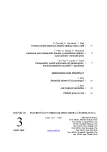-
Medical journals
- Career
Anatomy of ligaments of the prenatal ankle joint and its clinical relevance
Authors: Tomáš Pešl 1; Ondřej Naňka 2; Petr Havránek 1
Authors‘ workplace: Dept. of Pediatric and Trauma Surgery, 3rd Faculty of Medicine, Charles University in Prague and Thomayer Teaching Hospital, Prague 1; Klinika dětské chirurgie a traumatologie 3. LF UK a FTN 1; Charles University in Prague, 1st Faculty of Medicine, Institute of Anatomy 2; Univerzita Karlova v Praze, 1. lékařská fakulta, Anatomický ústav 2
Published in: Úraz chir. 18., 2010, č.3
Overview
Introduction:
The aim of our study was to examine the anatomy of the ligamentous apparatus of the ankle joint in a growing skeleton. We have focused especially on the relation between the distal tibial and fibular physes and insertion of the ligaments.Material and method:
An autopsy of six ankle joints in stillborns of ages between 32 to 35 weeks of gestation was performed. In none of them nor orthopaedic nor neurological lesions were apparent.Results:
All ligaments in all six dissected stillborn joints had already been fully developed prenatally and corresponded to the adult ligamentous apparatus. All but one ligaments were attached at the distal tibial and fibular epiphysis distally to the physis. The only exception was the interosseous tibiofibular ligament – a strengthened distal part of the interosseous membrane, which was stretched between the distal tibial and fibular metaphyses just above the physis.Discussion:
Until now, all studies regarding the development of the growing ankle joint in the literature have dealt with the successive ossification only and the ligamentous apparatus has been concerned just marginally. The relation between the skeleton, ligaments and physis has not been mentioned at all. We have demonstrated that the ligamentous anatomy of the growing and adult ankle joint is identical. The relation between the insertion of the ligament and the distal tibial or fibular physis has its clinical relevance in understanding the etiopathogenesis and treatment of the physeal and/or epiphyseal injuries to this region.Key words:
ankle joint, child, growth plate, physeal injuries, anatomy, ligaments of the ankle joint.
Sources
1. BARTONÍČEK, J. Syndesmosis tibiofibularis: část II – příspěvek klinického anatoma. Acta Chir Orthop Traumatol Čech. 1982, 49, 374–381.
2. BARTONÍČEK, J., HEŘT, J. Základy klinické anatomie pohybového aparátu. Praha: Maxdorf, 2004. 256 s.
3. BARTONÍČEK, J. Anatomy of the tibiofibular syndesmosis and its clinical relevance. Surg Radiol Anat. 2003, 25, 379–386.
4. CLOSE, JR. Some applications of the functional anatomy of the ankle joint. J Bone Joint Surg Am. 1956, 38-A, 761–781.
5. CRAWFORD, AH., AL-SAYYAD, MJ., MEHLMAN, CT. Fractures and dislocations of the foot and ankle. In: GREEN, NE., SWIONTKOWSKI, MF. (eds) Skeletal trauma in children. Philadelphia: Saunders Elsevier, 2009. 507–584.
6. CUMMINGS, RJ. Distal tibial and fibular fractures. In: BEATY, JH., KASSER, JR. (eds) Rockwood´s and Wilkins´ Fractures in children. Philadelphia: Lippincott Williams Wilkins, 2001. 1121–1168.
7. DIAS, LS., TACHDJIAN, MD. Physeal injuries of the ankle in children. Clin Orthop. 1978, 136, 230–233.
8. DOSKOČIL, M. Syndesmosis tibiofibularis: část III – příspěvek embryologa. Acta Chir Orthop Traumatol Čech. 1982, 49, 382–385.
9. DOSKOČIL, M. Distální spojení tibie a fibuly není jen syndesmóza. Sb Lék. 1988, 90, 1–7.
10. DOSKOČIL, M. Vývoj a biomechanika hlezenního kloubu. Sb Lék. 1995, 96, 85–103.
11. GROSS, RH. Ankle fractures in children. Bull NY Acad Med. 1987, 63, 739–761.
12. KAY, RM., MATTHYS, GA. Pediatric ankle fractures: evaluation and treatment. J Am Acad Orthop Surg. 2001, 9, 268–278.
13. LALONDE, F., PRING, ME. Ankle. In: WEGNER, DR., PRING, ME. (eds) Rang´s children´s fractures. Philadelphia: Lippincott Williams Wilkins, 2005. 227–242.
14. LOVE, SM., GANEY, T., OGDEN, JA. Postnatal epiphyseal development: the distal tibia and fibula. J Pediatr Orthop. 1990, 10, 298–305.
15. MACNEALY, GA., ROGERS, LF., HERNANDES, R. Injuries of the distal tibial epiphysis: systematic radiographic evaluation. Am J Roentgenol. 1982, 138, 683–689.
16. OGDEN, JA. Injury to the growth mechanisms of the immature skeleton. Skeletal Radiol. 1981, 6, 237–253.
17. OGDEN, JA., MCCARTHY, SM. Radiology of postnatal skeletal development. VIII. Distal tibia and fibula. Skeletal Radiol. 1983, 10, 209–220.
18. OGDEN, JA. Skeletal injury in child. New York: Springer, 2000. 1198 s.
19. PEŠL, T., HAVRÁNEK, P. Rare injuries to the distal tibiofibular junction in children. Eur J Pediatr Surg. 2006, 16, 255–259.
20. SOSNA, T., SOSNA, A., KORBELÁŘ, P. Anatomická stavba zevního postranního vazu hlezna a její význam v klinické praxi. Acta Chir Orthop Traumatol Čech. 1975, 42, 518–520.
21. TILLMANN, B., BARTZ, B., SCHLEICHER, A. Stress in the human ankle joint: brief review. Arch Orthop Trauma Surg. 1985, 103, 385–391.
22. VON LAER, L. Pediatric fractures and dislocations. Stuttgart: Thieme, 2004. 518 s.
Labels
Surgery Traumatology Trauma surgery
Article was published inTrauma Surgery

2010 Issue 3
Most read in this issue- Treatment of simple separation of distal radial epiphysis in children
- Do we know ATLS principles?
- Anatomy of ligaments of the prenatal ankle joint and its clinical relevance
- The perioperational use of ultrasound examination in penetrating brain injury. Case presentation
Login#ADS_BOTTOM_SCRIPTS#Forgotten passwordEnter the email address that you registered with. We will send you instructions on how to set a new password.
- Career

